Madonna, as one of the most popular singers of all time, has managed to remain a media icon even in the 2000s. “I think reinventing yourself is vital to your survival as an artist and a human being”, said Madonna. This thought reflected in her 2004 concert tour which was named as ‘Reinvention’. Businesses, similarly, are required to adapt to new trends and offer a lesson for firms who are struggling with their digital revolutions. ‘Paper to digital transformation’ is part of the digital reinvention strategy that they have to undergo so as to be relevant with changing times.

Business organisations have to challenge the way they work to make themselves less dependent on paper. They have to free themselves to be able to emphasise on high-value activities that drive customer satisfaction and high performance. Going paperless constitutes the process of altering how people work and the way they think. Everyone in the organisation needs to see that the transition from paper to digital will pave the way for a brighter future.
Going paperless
The idea of a paperless office burst onto the scene long ago. In an article, that was published in Bloomberg Businessweek in 1975, George E. Pake, who was head of Research at Xerox back then, postulated that a TV-display terminal with keyboard placed on the desk where he would “...call up documents from my files on the screen, or by pressing a button.”
The use of paper is driven by preference and is not mandatory
The use of paper is driven by preference and is not mandatory. Ironically, it is also driven by technology. Even though new technology won’t minimise the amount of paper that is used but enhances or shifts the ways in which we utilise it, states The Myth of the Paperless Office.
So, adding technology in your arsenal of business workflow propellers won’t reduce the reliance on paper altogether but would bring betterments on the table by improving business processes. Moreover, in this day and age, opting for technological means to drive your business operations is an optimal move as the technology costs are plummeting drastically (see the figure below).
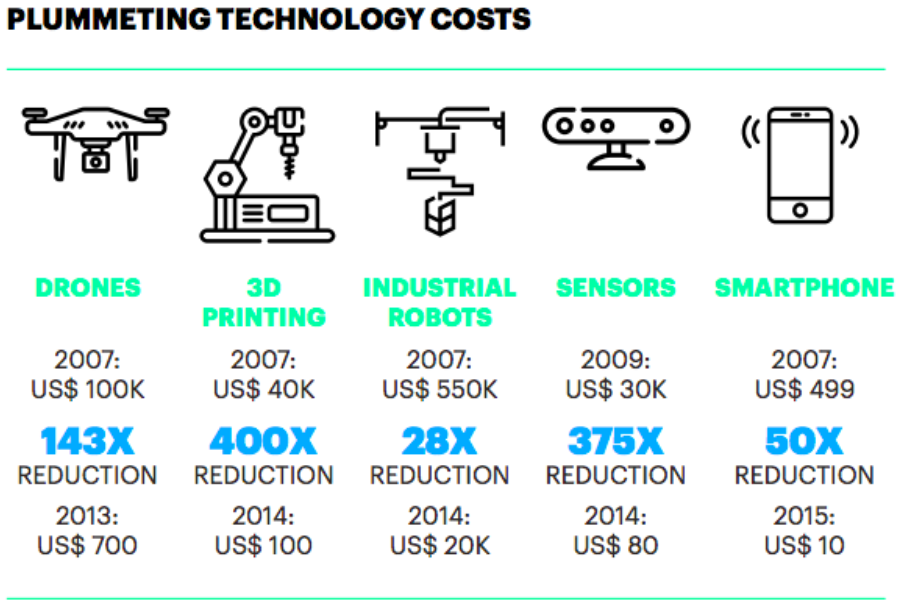
Further, as the following figure delineates, advancements in digital data and connectedness are metamorphosing business models and enabling new customer experiences.
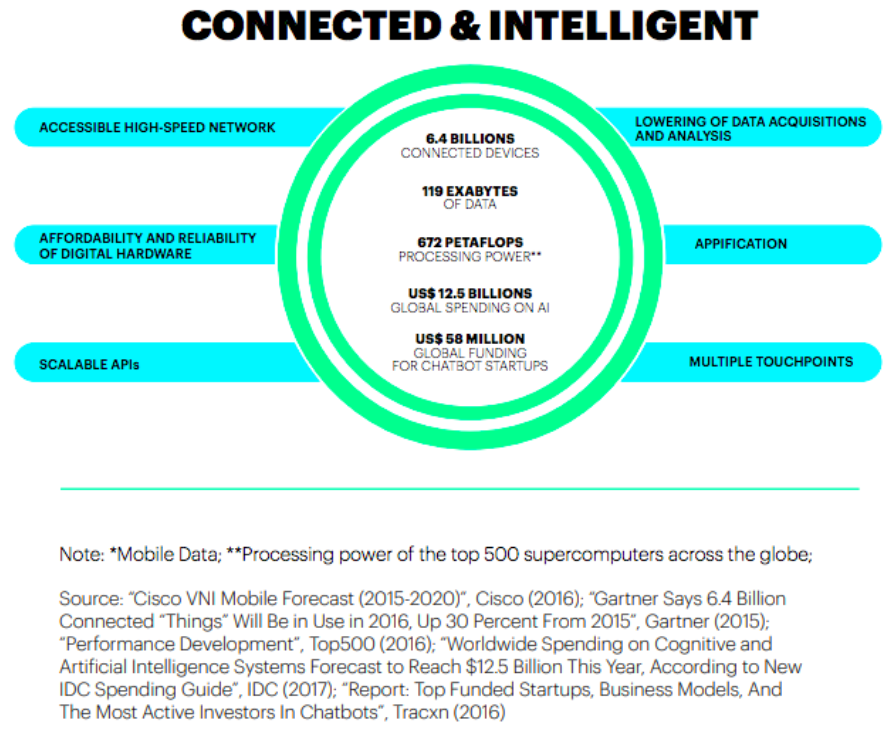
Concurrently, the emergence of futuristic technologies like machine learning, blockhain, quantum computing, augmented reality, virtual reality among others have been a huge factor in the organisation’ headway to going paperless.
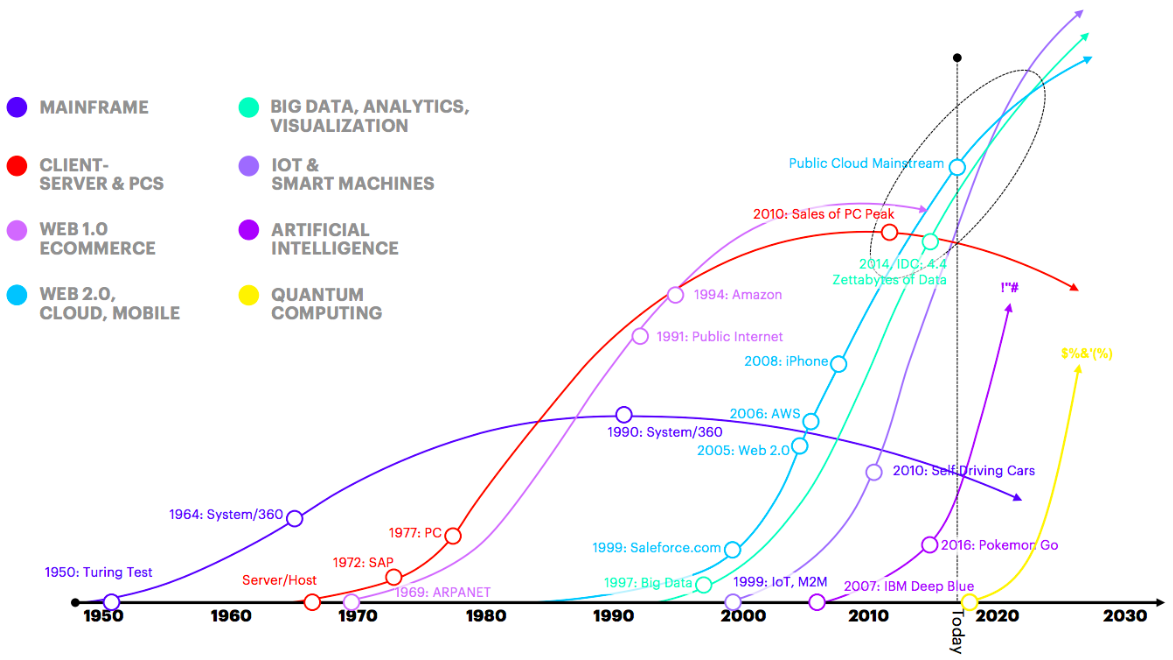
Benefits of going paperless
Data volume is one of the quintessential factors of going paperless. Information can be processed swiftly and securely. Digital processes are, also, fast, responsive and precise when compared to the those based on paper. Whether in terms of consumables, printer management, energy, productivity or storage prices, removing paper from business workflow is a cost-effective move.
Moreover, faster and smarter work through digital means leads to the provision of better customer service. And, by offering the best service at a competitive price, you can rest assured that the prospective customers would get the confidence of working with suppliers who use innovation in their business workflow. Going fully digital also shows your superiority in market leadership.
Also, going digital enhances the process of establishing a full audit trail thereby depicting your document’s chain of custody over its lifecycle. This also makes it much easier to comply with privacy legislation.
Strategy for going paperless
To effectively plan your transition of going paperless, a wisely thought-out strategy can be helpful.
Understanding is of utmost importance
You need to establish how and where the paper is being leveraged in your business and identify what could be altered.
The distinction between ‘good paper’ and ‘bad paper’ can be done. Good paper, here, constitutes the documents that have a valid reason to be in the form of hard copy like customer's handwritten letter or a researcher’s notes in a workbook. On the contrary bad paper comprises documents that are in paper format but without any compelling reason to be so.
Your progress from paper to digital will depend upon the nature of your organisation and where you are currently in the transformation chronology. Following table shows the instances of tasks or processes that could be digitised.
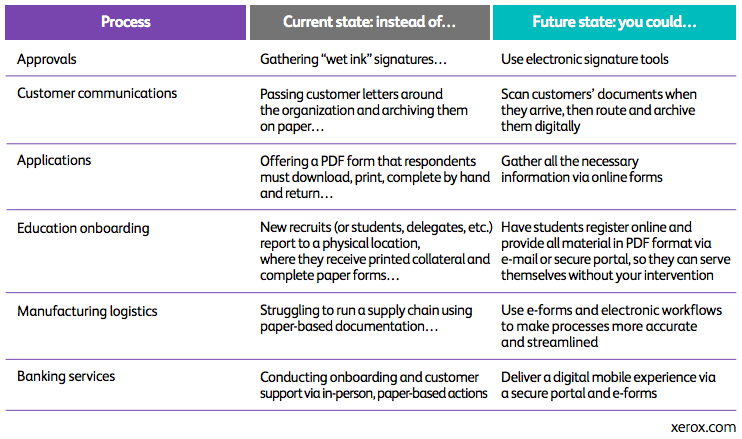
Next comes the process of educating
You need to set targets, make your case and bring about the change in the behaviour of people in your organisation.
Execute the plans once all set
You can, then, go on to replace the integral functions and processes with alternatives based on digital solutions. Some processes can be too large or intricate to be altered swiftly. If altering everything in one go is too risky, targeting one stage of a process at a time can be fruitful. Then, you can move on to the next one. This can be a slower process but if it negates the risk of business disruption or data loss, then it is worth the wait.
Bringing in improvements
Once some of your tasks and processes have been successfully moved from paper to digital, you can, then, start exploring the potential for more projects to automate and streamline key business workflows.
Conclusion
When properly implemented by leveraging the right technologies, going paperless can streamline compliance requirements, save money and greatly enhance productivity and client service.
We offer a suite of services in our efforts towards the provision for ambitious digital experience.
Let us know at [email protected] how you want us to be a part of your paper to digital transformation journey.
Subscribe
Related Blogs
Exploring Drupal's Single Directory Components: A Game-Changer for Developers

Web development thrives on efficiency and organisation, and Drupal, our favourite CMS, is here to amp that up with its…
7 Quick Steps to Create API Documentation Using Postman

If you work with API , you are likely already familiar with Postman, the beloved REST Client trusted by countless…
What is Product Engineering Life Cycle?
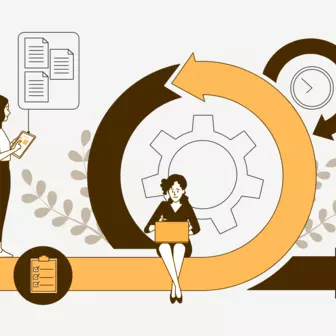
Imagine constructing a house without a blueprint or a set of plans. It will be challenging to estimate the cost and labor…




